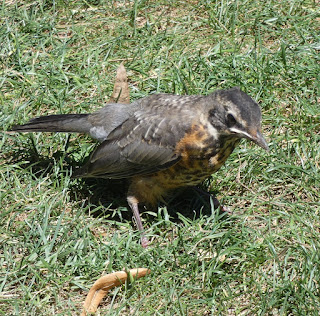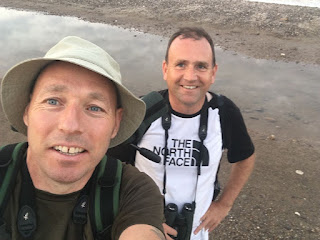Little Grebe brood (M Clarke)
Common Sandpiper
Fallow Deer (M Clarke)
Black-tailed Godwits (M Clarke)
Common Whitethroat (M Clarke)
Red Kite
Swift in the hand
A new way to start the weekend
Head on shot of the Swift
Greenshank
Green Sandpiper
Stunning recent weather
Gloomy Sunday
Plenty of promise but no new arrivals of note
Squire on Swift Duty
Plenty of Butterflies doing well in the sunshine
On the breeding front, three Little Grebe broods have emerged and the same number of Tufted Duck broods. The Greylag flock topped 400 midweek which is an unusual record for July.
Sundays weather looked very promising but only produced a juvenile Redshank.
Last Saturday the Squire and I took an injured Swift (he had found in desperate trouble in Alcester) to the Rescue Centre in Evesham. Sadly the Swift had fractured his wing so won't continue his journey south. The bird was very comfortable when in the hand and Mr & Mrs H had done a great job caring for the bird overnight.
Highlights
17th July - Male Redstart & Hobby
20th July 118 Black-headed Gulls, 2 Snipe, 2 Oystercatcher, 2 female Shoveler, Common Sandpiper, 2 Lesser-blacked Gulls with 2 juveniles, 3 Lapwing
21st July - Male Redstart, 90 Lapwing, 88 Black-headed Gulls, a House Martin, 6 Lesser-blacked Gulls with 2 juveniles, Common Sandpiper
23rd July - 2 Common Sandpiper, 2 Green Sandpiper
26th July - 3 Black-tailed Godwits, 2 Common Sandpiper
27th July - Greenshank (128), Green Sandpiper, Common Tern, 92 Lapwing, 22 Lesser-blacked Gulls with 2 juveniles, 405 Greylag
28th July - No new arrivals
29th July - Redshank, Green Sandpiper, 4 Common Sandpiper, nice passage of House & Sand Martin & 12 Swift.
Thanks to Jon B, Paul H & Mark C for contributing to the sightings.






















































